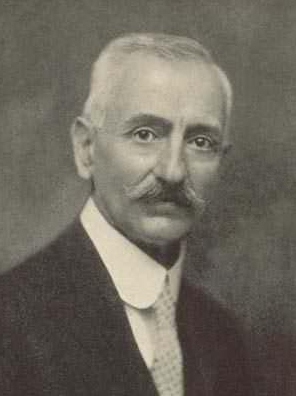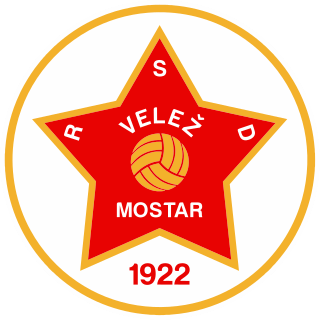
Like the surrounding Balkan countries, Bosnia and Herzegovina has had a turbulent past marked by frequent foreign invasions and occupation. As a result, Bosnian music is now a mixture of Slavic, Turkish, Central European, Mediterranean, and other influences.

Mostar is a city and the administrative centre of Herzegovina-Neretva Canton of the Federation of Bosnia and Herzegovina, an entity of Bosnia and Herzegovina, and the historical capital of Herzegovina.

War Child International is an independent non-government organization founded in 1993 by film-makers Bill Leeson, David Wilson, and peace activist Willemijn Verloop. The organization works with parents, caregivers, community members, NGOs, governments, corporations, and other partners worldwide to ensure that children have access to protection, education and psychosocial support. War Child's work is rooted in the United Nations Convention on the Rights of the Child.

Stari Most, also known as Mostar Bridge, is a rebuilt 16th-century Ottoman bridge in the city of Mostar in Bosnia and Herzegovina. It crosses the river Neretva and connects the two parts of the city, which is named after the bridge keepers (mostari) who guarded the Stari Most during the Ottoman era. During the Croat–Bosniak War the bridge was shelled and destroyed by the Croatian Defence Council (HVO) and units of invading Croatian Army on 9 November 1993. Subsequently, the bridge was reconstructed, and it re-opened on 23 July 2004.

Aleksa Šantić ; 27 May 1868 – 2 February 1924) was a Bosnian Serb poet and writer from Mostar, Bosnia and Herzegovina. Šantić wrote about the urban culture of his hometown Mostar and Herzegovina, the growing national awareness of Bosnian and Herzegovinian Serbs, social injustice, nostalgic love, and the unity of the South Slavs. He was the editor-in-chief of the magazine Zora (1896–1901). Šantić was one of the leading persons of Serbian literary and national movement in Mostar. In 1914 Šantić became a member of the Serbian Royal Academy.

Fudbalski klub Velež Mostar is a professional football club based in Mostar, Bosnia and Herzegovina. The club has a history of being one of the most successful clubs from Bosnia and Herzegovina. It was founded on 26 June 1922. The club currently plays at Rođeni Stadium, but its historic stadium is the Bijeli Brijeg. Due to the divisions between Bosniak and Croat territories, Velež lost its previous home ground of Bijeli Brijeg. That stadium was largely used by Velež during the glory days of the club, when they triumphed in the 1981 and 1986 Yugoslav Cups. The club also reached the quarter-final stage of the 1974–75 UEFA Cup. Velež have a bitter rivalry with city neighbours, HŠK Zrinjski Mostar.

Tourism in Bosnia and Herzegovina is a fast-growing sector making up an important part in the economy of the country.

The Croats of Bosnia and Herzegovina, often referred to as Bosnian Croats or Herzegovinian Croats, are native and the third most populous ethnic group in Bosnia and Herzegovina, after Bosniaks and Serbs, and are one of the constitutive nations of Bosnia and Herzegovina. Croats of Bosnia and Herzegovina have made significant contributions to the culture of Bosnia and Herzegovina. Most Croats declare themselves Catholics and speakers of the Croatian language.

The United World College in Mostar is a part of the United World College, founded by Elisabeth Rehn and Lamija Tanović in 2006 and officially opened by Queen Noor of Jordan. UWC Mostar is the first UWC with an explicit aim to contribute to the reconstruction of a post-conflict society and also the first to be housed within an existing public school. UWC Mostar is the twelfth college in the United World Colleges family, and the fourth college in Europe.

Blagaj is a historic village and protected heritage site in Bosnia and Herzegovina. It is located in the south-eastern region of the Mostar basin, in the Herzegovina-Neretva Canton. It stands at the edge of Bišće plain and is one of the most valuable mixed urban and rural built environments in Bosnia and Herzegovina, distinguished from other similar built environments in its urban layout. Blagaj was most likely named for its mild weather patterns since blaga in Bosnian means "mild". Blagaj is situated at the spring of the Buna river and a historical tekija. The Blagaj Tekija was built around 1520, with elements of Ottoman architecture and Mediterranean style and is considered a national monument. Blagaj Tekke is a monastery built for the Dervish.

Centuries before the Ottoman conquest of Bosnia, Mostar was a small hamlet situated at a strategic crossing of the Neretva river. Its hinterlands consisted of a broad agricultural plain on the west bank and steep terraces on the east bank surrounded by barren mountains. Mostar was a representative multi-ethnic and multi-cultural settlement in Bosnia and Herzegovina, which had possessed an independent political identity since the twelfth century. By the fifteenth century, most of the lands that would later become part of modern Yugoslavia were inhabited primarily by peoples of the same south Slavic heritage.

HŠK Zrinjski Mostar is a professional football club, based in Mostar, Bosnia and Herzegovina. The club plays in the Premier League of Bosnia and Herzegovina, and has been one of the top teams in the country over the last few years. With eight championships won in the Premier League of Bosnia and Herzegovina, Zrinjski is one of the most decorated football clubs in Bosnia and Herzegovina. The club plays its home matches at Stadion pod Bijelim Brijegom in Mostar. Zrinjski's fans are called Ultras Mostar and the fan club was founded in 1994.

Gnojnice is a suburb in the City of Mostar, Bosnia and Herzegovina. According to the 2013 census, the population was 3,637.
Croatian Lodge "Herceg Stjepan Kosača" is a city-sponsored public institution in Mostar, Bosnia and Herzegovina, which promotes, assists and organizes educational and art events. It was named after Stjepan Vukčić Kosača, a 14th-century nobleman from Herzegovina. Its premises are used for art exhibitions, concerts, theatre performances, lectures, movie screenings, puppet shows, dance classes, lectures, and conventions.

Mostar Youth Theatre is a city-sponsored community theatre located in Mostar, Bosnia and Herzegovina.

Pavarotti Music Centre is a non-profit arts institution located in Mostar, Bosnia and Herzegovina. It was opened on 21 December 1997 and its premises are located in a former primary school. It was funded entirely by War Child thanks to a number of concerts organized by Luciano Pavarotti, Brian Eno, members of U2 and other artists. The center provides music education for young people and other services, such as workshops, dance classes, and theatre performances. The Centre is housed within a building constructed in 1908 during the Austrian-Hungarian period according to the project of architect D. Knezic.
Mostar Friedensprojekt e.V. is, since 1994, a registered non-governmental, non-profit organization with charitable commitments in the state of Brandenburg, located in the city center of Potsdam. The association organizes socio-cultural activities, artistic and cultural events and cultural publications at the local, regional and national level. It offers information, general support, advice, logistic and humanitarian aid, job qualifications and consultancy to refugees and asylum seekers in the region of Brandenburg and Berlin. Mostar Friedensproject is constantly coordinating and leading youth exchanges, European Voluntary Service, trainings, conferences, events and other support facilities within the framework of the European program Youth, Grundtvig, Europe for Citizen and LiFelong Learning. The association has the partners in many European countries, particularly in the Western Balkan, East Europe and the Caucasus.

The Siege of Mostar was fought during the Bosnian War first in 1992 and then again later in 1993 to 1994. Initially lasting between April 1992 and June 1992, it involved the Croatian Defence Council (HVO) and the Army of the Republic of Bosnia and Herzegovina (ARBiH) fighting against the Serb-dominated Yugoslav People's Army (JNA) after Bosnia and Herzegovina declared its independence from Yugoslavia. That phase ended in June 1992 after the success of Operation Jackal, launched by the Croatian Army (HV) and HVO. As a result of the first siege around 90,000 residents of Mostar fled and numerous religious buildings, cultural institutions, and bridges were damaged or destroyed.

Gimnazija Mostar is a gymnasium in Mostar, Bosnia and Herzegovina. Formerly called Gimnazija "Aleksa Šantić" in honour of the eponymous poet, it is nowadays popularly referred to as Stara gimnazija.














